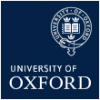Experiments for dust models are proposed to estimate the contribution of land use to dust emission, deposition, and optical properties. In addition a sensitivity study related to the threshold of wind erosion is proposed. Multi-models comparison with observations will provide an envelope of uncertainties.. A detailed description can be found here: Specifications
Timeline: Analysis: completion for Aerocom 2019; Paper: 1st draft for Aerocom 2019; Manuscript submission by December 2019
Column with diagnostic requests in excel sheet: Aerocom Phase III Control (AP3-CTRL)
Document(s) with more info: Anthro_dust_AeroComIII.pdf
Dust source: NetCDF files
“EXPERIMENT NAMES”:
The Anthro-dust experiment consists to run one control experiment (CTRL2016) with standard configuration for 3 years from 2010 to 2012, and perturbed cases with satellite based inventory (MDB2-A; MDB2-Ba…MDB2-Bd; MDB2-C), which differentiates between natural and land use dust sources. To better constrain the threshold of wind erosion (Ut0) a sensitivity study is performed with Ut0 multiplied by 1 (MDB2-Ba), 0.5 (MDB2-Bb),1.5 (MDB2-Bc) and 1.25 (MDB2-Bd) for land use sources (foo_ant; the natural source is shutdown). Then both, natural and anthropogenic dust sources are activate using everywhere Ut0. But before performing the perturbed case, it is necessary to perform a simulation (MDB2-A) with provided natural sources (foo_nat). This experiment is used to determine the global constant of emission(C) such that the global annual dust emissions from the control (C0) and new inventory (Cnew) have the same value. The last experiment MDB2-C uses both sources (foo), Cnew and Ut0.
Simulation period: 3 years from 2010 to 2012
“CTRL2016” 1. Simulate with your own sources using your own C0 and Uto.
“MDB2-A“ 2. Simulate with MDB2 natural sources with Uto, then calculate global emission Cnew to have same global mean annual emission as in 1. Cnew=C0 * (global mean annual emis exp1)/(global mean annual emis exp2)
3. Simulate with MDB2 anthropogenic sources with Cnew and with: “MDB2-Ba” a) Uto “MDB2-Bb“ b) 0.5*Uto “MDB2-Bc” c) 1.5*Uto “MDB2-Bd” d) 1.25*Ut0
“MDB2-C” 4. Simulate with MDB2 natural and anthropogenic sources with Cnew and Uto




